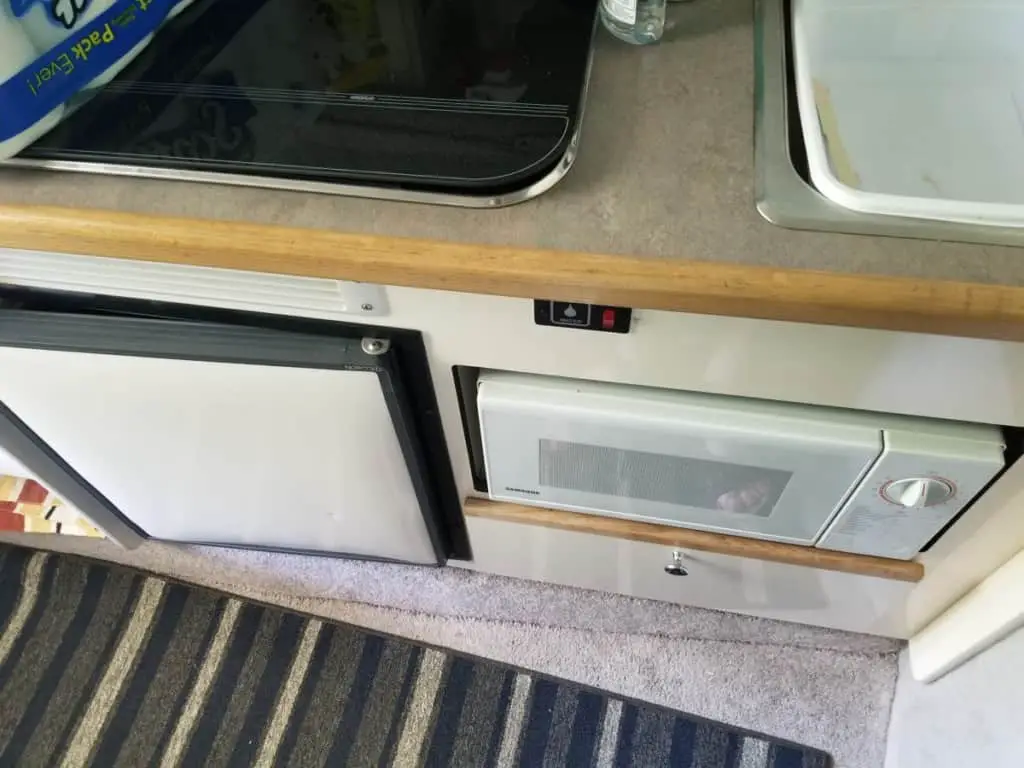Winterizing a cuddy cabin boat is an essential task for any boat owner who wants to protect their investment and ensure that their vessel is ready to hit the water as soon as the weather starts warming up again.
As the colder months approach, it’s crucial to take the necessary steps to safeguard the boat’s engine, plumbing, electrical systems, and interior from potential damage caused by freezing temperatures and harsh weather conditions. A thorough winterization process can make all the difference between a smooth sailing season and costly repairs.
In this detailed guide, we’ll walk you through the essential steps to winterize your cuddy cabin boat, ensuring it stays in tip-top shape during the off-season. So, grab your tools and let’s get your boat ready for its winter hibernation.

Clean and Prep Your Boat
Before starting the winterization process, it’s essential to give your boat a thorough cleaning. This includes:
- Washing the exterior with mild soap and water. Scrub the hull, deck, and topsides to remove any dirt, algae, or salt deposits.
- Cleaning the interior, including upholstery, carpets, and countertops. Use a vacuum cleaner and mild cleaning solutions to remove any dirt, dust, and grime that may have accumulated during the season.
- Emptying and cleaning the fridge, freezer, and any other appliances. Wipe down all surfaces with a disinfectant to prevent mold and mildew growth.
- Removing and storing any personal items or electronics, such as fishing gear, life jackets, and navigation equipment. Store these items in a cool, dry place to protect them from damage.
Check for Damage and Make Repairs
Inspect your boat for any signs of damage, such as cracks, dents, or leaks. Address any necessary repairs before storing your boat for the winter. This will save you time and effort when it’s time to get your boat back on the water. Consider the following:
- Inspect the hull and deck for any signs of stress cracks or gelcoat blisters. Repair any minor damages and consult a professional for more severe issues.
- Check the boat’s hardware, such as cleats, railings, and fittings, for any signs of corrosion or wear. Replace or repair any damaged components.
- Inspect the boat’s electrical system for any loose connections or corroded terminals. Clean and tighten any connections as necessary.
Winterize the Engine and Fuel System
Properly winterizing your engine and fuel system is crucial to avoid costly repairs and potential damage. Follow these steps:
- Run the engine to warm it up, then change the oil and oil filter. This helps remove any contaminants that may have accumulated during the season.
- Flush the cooling system with freshwater and add antifreeze. This prevents freezing and corrosion within the engine block and cooling system components.
- Fill the fuel tank and add a fuel stabilizer to prevent condensation and fuel degradation. This helps maintain fuel quality during storage and reduces the risk of engine problems when starting up in the spring.
- Fog the engine by spraying fogging oil into the carburetor or throttle body while the engine is running. This coats the internal engine components with a protective layer to prevent rust and corrosion.
- Remove the spark plugs and spray fogging oil into each cylinder. Turn the engine over manually to distribute the fogging oil, then replace the spark plugs.
- Disconnect the battery and store it in a cool, dry place. Use a battery maintainer (my personal favorite that I’ve been using for years, as seen on Amazon) to keep it charged and extend its life.

Drain and Winterize the Water System
Winterize your cuddy cabin’s water system to prevent freezing and potential damage. Follow these steps:
- Drain the freshwater tank and water heater. Open all faucets, showerheads, and other water outlets to ensure all water is removed from the system.
- Bypass the water heater and add non-toxic antifreeze to the freshwater system. Use a water pump converter kit to draw antifreeze into the system and distribute it through all plumbing lines.
- Pump antifreeze through the faucets, showerheads, and any other water outlets in the cuddy cabin. This will help protect the plumbing system from freezing temperatures and potential damage. To do this, follow these steps:
- Drain the water heater and bypass it to prevent antifreeze contamination.
- Attach a hose to the inlet of the water pump and place the other end of the hose into a container of non-toxic antifreeze.
- Turn on the water pump and open the faucets one by one until antifreeze flows out instead of water. Remember to do this for both hot and cold water lines.
- Don’t forget to pump antifreeze through the showerhead and any other water outlets, such as an outdoor washdown system or onboard refrigerator ice maker (if applicable).
- Remove any food and beverages from the cuddy cabin’s galley or storage areas to prevent spoilage and the risk of attracting pests.
- Clean and dry the refrigerator, freezer, and other appliances. Leave the doors slightly ajar to allow for air circulation and prevent mold and mildew growth.
- Check and clean the bilge area, ensuring that it’s free of water, debris, and oil. A clean bilge will prevent unpleasant odors and potential damage to the boat’s systems.
Protect the Cuddy Cabin and Sleeping Quarters
Taking care of the cuddy cabin and sleeping quarters is essential to maintain a clean and comfortable environment. Here’s what you should do:
- Clean and dry all bedding, cushions, and upholstery. Store them in a dry and well-ventilated area to prevent mold and mildew growth.
- Place moisture-absorbing products, such as silica gel or moisture-absorbing buckets, throughout the cabin to prevent condensation and dampness.
- Ventilate the cabin by slightly opening a hatch or porthole, but make sure it’s secured to prevent unauthorized access or water intrusion.
- Use a dehumidifier or air dryer to maintain a dry environment within the cabin, especially if your boat is stored in a humid climate.

Cover and Store Your Boat
Properly covering and storing your boat will protect it from the elements and keep it in top condition for the next season. Consider these tips:
- Use a high-quality boat cover or shrink wrap to protect your boat from rain, snow, and UV damage. Ensure the cover is well-ventilated to prevent condensation and mold growth.
- Support the boat cover with a frame or support poles to prevent water pooling and to maintain the cover’s shape.
- Store your boat in a dry, well-ventilated location, such as a garage, storage facility, or covered boatyard. If storing outdoors, choose a location that’s sheltered from strong winds and potential flood hazards.
- Place wooden blocks or jack stands under the boat’s hull to evenly distribute the weight and prevent any potential stress points or damage.
Perform Routine Maintenance Checks
Even when your boat is in storage, it’s essential to perform routine maintenance checks to ensure it remains in excellent condition. Here’s what you should do:
- Periodically inspect the boat cover or shrink wrap for any signs of damage or wear. Repair or replace the cover if necessary to maintain proper protection.
- Check the boat’s battery charge and top up if required. A well-maintained battery will ensure a smooth start-up when it’s time to get back on the water.
- Inspect the boat for any signs of pests, such as rodents or insects. If necessary, use traps (lots of them!) or repellents to keep them away from your boat.
Cuddy Cabin Winterizing Checklist
| Step | Task |
|---|---|
| 1 | Consult owner’s manual |
| 2 | Remove personal items and valuables |
| 3 | Clean and inspect the boat |
| 4 | Change engine oil and filter |
| 5 | Flush and drain the cooling system |
| 6 | Add fuel stabilizer and top off the fuel tank |
| 7 | Fog the engine |
| 8 | Drain and refill the gear case |
| 9 | Inspect and lubricate steering system and other components |
| 10 | Disconnect the battery |
| 11 | Winterize freshwater systems |
| 12 | Winterize the head and holding tank |
| 13 | Inspect and maintain bilge pumps and switches |
| 14 | Cover the boat |
| 15 | Store the boat in a safe location |
Important Takeaways
Properly winterizing your cuddy cabin boat is a crucial aspect of boat ownership that can save you from headaches, costly repairs, and maintenance issues when the boating season returns. By following the detailed steps outlined in this guide, you’ll ensure your boat is well-protected during the off-season and ready for smooth sailing when warmer temperatures arrive.
Remember that each boat is unique, so it’s essential to consult your owner’s manual for specific winterization procedures and recommendations for your particular vessel. In addition, it’s always a good idea to create a personalized checklist for your boat’s winterization process to ensure nothing is overlooked.
Lastly, consider seeking professional assistance if you’re unsure about any aspect of the winterization process or if you’re new to boat ownership. Many marinas and boat service centers offer winterization services that can give you peace of mind knowing your prized possession is in expert hands. With proper care and attention to detail, you’ll be rewarded with a well-maintained cuddy cabin boat that provides many years of enjoyable boating experiences. Safe and happy boating!
